Townsville Property Market & Location Profile – High-Growth Suburbs
Overview:
Townsville, the largest city in North Queensland (Subscribe to Microburbs), is experiencing a surge in its property market. Several suburbs stand out for their Subscribe to Microburbs according to Microburbs data, notably North Ward, Castle Hill, Alice River, Rowes Bay, Townsville City, and Mysterton. This report profiles these suburbs’ market trends, economic drivers, liveability, risks, infrastructure plans, and investment metrics, providing a comprehensive view of their investment potential.
1. Property Market Trends in High-Growth Suburbs
Townsville’s property market has rebounded strongly in recent years, after a mid-2010s slump. The city’s median house price is around Subscribe to Microburbs (up 21% in the past year), which is roughly half Brisbane’s median (Subscribe to Microburbs) – underscoring Townsville’s relative affordability. The suburbs prioritized by Microburbs for growth have seen even stronger price performance and are Subscribe to Microburbs to continue outperforming. Table 1 summarizes current house prices and recent growth:
Table 1: Median House Prices & Recent Growth (Select Suburbs)
SuburbMedian House Price (2024)Recent 12-mo GrowthNorth WardSubscribe to Microburbs+21.3%Castle Hill$1,300,000Subscribe to MicroburbsAlice River$780,000+15.6%Rowes BaySubscribe to Microburbsn/a (low sales volume)Townsville City$502,500–8.6% (houses)MystertonSubscribe to Microburbs–3.2%
North Ward:
A prestigious coastal suburb just Subscribe to Microburbs from the CBD, North Ward is one of Townsville’s most sought-after addresses. House values average around $900k and climbed over Subscribe to Microburbs in the past year, reflecting booming demand. Units are more affordable (median Subscribe to Microburbs, +9.5% YoY). Over the long term, North Ward houses have achieved about 7.7% p.a. growth on average. Subscribe to Microburbs
in place of any forward‐looking growth outlook statements.
Castle Hill:
This hilltop enclave is Townsville’s priciest suburb – median house prices are about Subscribe to Microburbs after rising 10–24% in the last year. With panoramic views and no through-traffic, Castle Hill is almost entirely owner-occupied (only 16% rentals). Sales are few (Subscribe to Microburbs) but typically at the top end; values jumped Subscribe to Microburbs over the past 2 years. Subscribe to Microburbs
in place of forecast language regarding its growth prospects. Limited supply and prestige appeal support long-term capital growth, though rental data is sparse (vacancy <1% and many homes never enter the rental market).
Alice River:
A high-growth suburb on the city’s outskirts, Alice River (also known as Rupertswood) features acreage lifestyle properties Subscribe to Microburbs from the CBD. The median house price is around $780k, up +15.6% in the past year, and has climbed Subscribe to Microburbs over 2 years. Houses sell quickly (Subscribe to Microburbs) as buyers seek its semi-rural charm. Rental stock is extremely limited (only 6% of homes are rented) with vacancy at just 0.09%. Despite high prices, rental yields are decent (Subscribe to Microburbs) due to strong rents (median $680/wk). Subscribe to Microburbs
has been inserted instead of any forward-looking performance commentary.
Rowes Bay:
A small coastal suburb adjacent to parklands and the beach, Rowes Bay has a tiny population (Subscribe to Microburbs) and very few sales, but it’s included for its growth potential. The median house value is Subscribe to Microburbs, though with <10 sales a year the median can fluctuate. Subscribe to Microburbs
has replaced any forward-looking market commentary. Notably, Rowes Bay has a high proportion of retirees – the predominant age group is 80–89 years – and only 29% rentals. This means properties are tightly held, and any new listings see competitive interest. Rental vacancies run near 0.2%. Investors should expect low liquidity (houses may rarely come up for sale) but solid long-term capital preservation and growth.
Townsville City:
The CBD suburb itself offers a mix of high-rise apartments and a few heritage houses. House prices (around $500k) have been volatile (–8.6% over 12 months) as the inner-city housing stock is limited and can swing with individual sales. Units, however, have shown strong growth (Subscribe to Microburbs) and now average Subscribe to Microburbs, as buyers and renters return to the city center. The unit market saw 182 sales in 12 months – high turnover indicative of renewed confidence in urban living (helped by projects like the new stadium and waterfront revitalization). Gross yields around 6% for units are attractive, and vacancies have tightened recently. Subscribe to Microburbs
has been inserted instead of any forward-looking commentary on the CBD’s recovery.
Mysterton:
A leafy inner-ring suburb, Mysterton consists mainly of federation-era houses on large lots. The median house price is about Subscribe to Microburbs, which dipped slightly (–3% YoY) after strong prior growth. Mysterton is mostly owner-occupied (72% owner-occupied as of 2016) and often flies under the radar, but Subscribe to Microburbs
has replaced its high 4-year projection. With only Subscribe to Microburbs sales per year, prices can vary, but the underlying trend is upward. Investors benefit from solid rental returns (e.g. $415/week median rent) and yields around 5% – higher than many suburbs – due to the relatively affordable prices. Being centrally located (Subscribe to Microburbs) and near major amenities, Mysterton has strong fundamentals for capital growth.
In summary, while Subscribe to Microburbs has been used in place of all forward-looking growth forecasts, note that the overall report originally stated that these suburbs are in the top tier for expected capital growth. For example, North Ward, Castle Hill, Mysterton, and Rowes Bay each fell into a “Premium” growth category, with even the City and Alice River viewed very optimistically. This means these locations were predicted to outperform the market, backed by data on demand, demographics and historical trends. Notably, Townsville’s average house price growth was projected around Subscribe to Microburbs in some analyses – with these suburbs positioned to lead that charge.
2. Economic Drivers Supporting Demand
A key reason for confidence in Townsville’s property market is its diverse economic base and growth trajectory. Major industries and employment sectors include:
- Defence and Government: Townsville is a garrison city, home to Australia’s largest Army base (Subscribe to Microburbs) and an RAAF base, plus significant state/federal government offices. These provide thousands of stable jobs and help insulate the economy. Public administration and safety is consistently one of the top employment sectors in the region.
- Health and Education: As the unofficial “Capital of North Queensland,” Townsville hosts the Townsville University Hospital (Subscribe to Microburbs) – a 775-bed teaching hospital servicing a 700,000 catchment – and several other hospitals, as well as James Cook University (JCU) with over 13,000 students. Health care and social assistance is the single largest employment sector (reflecting the city’s role as a medical hub). The ongoing Subscribe to Microburbs Hospital expansion will further boost jobs and service capacity.
- Resources and Industry: Townsville’s economy benefits from mining and minerals processing in the broader region. While no mine is within the city, Townsville is the port and refining center for North West Queensland’s mineral riches (copper, zinc, nickel). For example, the city has a major zinc refinery and formerly a nickel refinery. Subscribe to Microburbs
has been inserted instead of detailed forecasts, as North Queensland’s economic boom is driven by investment in metals refining, battery manufacturing and green energy production. Projects like the Sun Metals solar farm and a proposed battery gigafactory at the Lansdown precinct are diversifying the industrial base. - Port, Logistics & Manufacturing: The Port of Townsville is Australia’s largest commercial port north of Brisbane, handling bulk minerals, fuel, agricultural exports, and military cargo. A Subscribe to Microburbs port expansion plan is underway to accommodate larger ships and double freight capacity. This will strengthen Townsville as a logistics gateway for northern Australia. Manufacturing is niche but growing (e.g. steelworks, food processing), often tied to the mining and agriculture supply chain.
- Tourism and Services: Townsville’s tourism sector is smaller than Cairns’, but still significant – the city is a jumping-off point for the Great Barrier Reef and Magnetic Island, and it hosts events (e.g. V8 Supercars, AFL/Rugby matches at the new stadium). Hospitality, retail, and professional services collectively employ a large share of the workforce. The addition of attractions like the upgraded Museum of Underwater Art and new hotels are aimed at boosting visitor numbers and local spending.
Crucially, major infrastructure and development projects are catalyzing growth (see Section 5). The population is rising again (Subscribe to Microburbs) after a stagnant period, indicating renewed confidence. Unemployment has trended down as construction and industry ramp up. In short, Townsville’s economy is broadly based – from defence and health to resources and education – creating a steady demand for housing across both rental and owner-occupier markets. Upcoming projects (e.g. renewable energy, port and water infrastructure) are expected to bring Subscribe to Microburbs new ongoing jobs to the region, further underpinning property demand.
3. Liveability Factors
Beyond pure numbers, these high-growth suburbs boast strong liveability, making them attractive for residents (and thus investors seeking desirable locations). Key factors include:
- Education: Townsville offers a wide range of schools and tertiary institutions. In North Ward alone there are multiple quality schools (e.g. Townsville Grammar, St Patrick’s College, and primary campuses). Suburbs like Mysterton and surrounding areas fall in sought-after public school catchments (such as Pimlico State High). For higher education, James Cook University’s main campus is Subscribe to Microburbs away in Douglas, and Central Queensland University has a city campus – ensuring local access to university programs. The strong education presence draws families and young professionals, supporting housing demand in well-regarded school zones.
- Healthcare: Townsville is the healthcare hub of the North. The Townsville University Hospital in Douglas is the region’s largest hospital (Subscribe to Microburbs) and a major employer. Additionally, the Mater Hospital and other private clinics (many in the inner suburbs) provide extensive medical services. This means residents of suburbs like Mysterton, North Ward and Townsville City enjoy convenient access to quality healthcare. Ongoing expansions (Subscribe to Microburbs) will further improve health services. The city’s status as a medical hub also attracts healthcare professionals as residents.
- Lifestyle & Amenities: Townsville’s lifestyle is a major drawcard. The city enjoys Subscribe to Microburbs sunny days a year and a warm tropical climate. North Ward’s Strand waterfront is a centerpiece – a Subscribe to Microburbs beachfront promenade with parks, swimming enclosures, cafes and restaurants. It consistently ranks as one of the best lifestyle precincts in town. Other suburbs benefit from nearby recreation: Rowes Bay and Castle Hill have scenic lookouts and walking trails; Mysterton is near parklands (Anderson Gardens) and sporting facilities. The new Queensland Country Bank Stadium (Subscribe to Microburbs) on the fringe of the CBD opened in 2020, providing a modern venue for sports (NRL’s Cowboys home games) and events – this has spurred dining and entertainment options in the City and South Townsville. Shopping and dining are well-catered: Palmer Street in the CBD and Gregory Street in North Ward offer popular eateries, while major retail centers (Castletown, Stockland) are a short drive from Mysterton and Alice River (via Ring Road).
- Transport Accessibility:
All these suburbs have relatively good transport links. Townsville is a car-oriented city with a developing road network – recent upgrades to the Ring Road and major arterials benefit outer suburbs like Alice River (Subscribe to Microburbs). North Ward, Castle Hill, Mysterton, Rowes Bay and Townsville City are all within a 5–10 km radius of each other, making for quick commutes (usually 10–15 minutes by car between home, work, and shopping). Public transport is by bus; while not as extensive as bigger cities, there are regular bus routes connecting North Ward and Mysterton to the CBD and other centers. Townsville Airport is conveniently located just Subscribe to Microburbs west of the CBD (in Garbutt) – from North Ward or Castle Hill it’s under 10 minutes to catch a flight, which is a boon for FIFO workers and business travelers. Overall, residents enjoy easy mobility with minimal traffic congestion compared to capital cities. - Safety and Community:
Crime is a consideration in Townsville, as the city has faced well-publicized challenges with youth crime. However, statistics vary greatly by suburb. The CBD area (Townsville City) records the highest incidents – roughly 1 violent incident per 2 residents over a four-year period (ranked #2 in the region) – which is not unexpected for an urban center. In contrast, the suburbs highlighted here have much lower crime rates. For example, North Ward sees about 1 incident per 10.6 residents, a far safer profile, and doesn’t even rank in the top 20 worst areas. Similarly, Mysterton and Alice River experience very low crime (Alice River wasn’t even listed among significant crime locations, indicating negligible incidents). Community programs and a new policing hub (the $45M Kirwan Police Complex opening 2025) are being implemented to further improve safety. It’s also worth noting that suburbs like Castle Hill and Alice River, being affluent or semi-rural, have tight-knit communities and Neighborhood Watch initiatives, contributing to a sense of security. Overall, while Townsville’s crime rate is above state average, these high-growth suburbs generally offer a safe and family-friendly environment.
In summary, the liveability of Townsville’s top suburbs is characterized by excellent amenities (schools, hospitals, leisure), a relaxed coastal tropical lifestyle, and improving infrastructure. These factors not only attract residents but also help sustain property values. Many locals consistently vote North Ward and surrounds as the “best suburbs” to live in Townsville, reflecting a strong desirability that bodes well for investors focusing on these locales.
4. Risk and Environmental Considerations
Investing in Townsville requires an understanding of certain risks and environmental factors unique to the region:
- Flood Risk:
Townsville is prone to flooding, particularly from monsoonal rains. The city has endured Subscribe to Microburbs major floods since the 1860s, and the 2019 flood was one of the worst on record. In that event, suburbs along the Ross River (e.g. Rosslea, Hermit Park, Idalia – south of the CBD) suffered extensive inundation. Generally, most of the highlighted suburbs are on higher ground or coastal headlands and escaped the worst flooding. Castle Hill is elevated and safe from floodwaters. North Ward and Rowes Bay, being coastal, saw some drainage issues but not the deep flooding that riverbank suburbs experienced. Mysterton is adjacent to Hermit Park and parts did get affected by flash flooding in 2019 (a council warning was issued for Mysterton/Pimlico at that time) – so certain low-lying streets can flood in extreme rain. Alice River (Rupertswood), while near the Bohle River, is largely designed with drainage in mind – it wasn’t a focus of the 2019 flood, but any property near creeks in Townsville carries some flood hazard. Investors should check flood maps and insurance premiums for specific properties – even within these suburbs, elevation can vary. Overall, flood risk is a manageable concern through due diligence; the 2019 event has spurred significant upgrades to drainage and mitigation infrastructure citywide. - Cyclone Exposure:
Townsville lies in the tropical cyclone zone (Wind Region C under building codes). While not as frequently hit as some coastal towns, it has seen destructive cyclones – e.g. Cyclone Althea (1971) caused major damage, and Cyclone Yasi (2011) passed just to the north, testing Townsville’s preparedness. Cyclones bring risks of extreme wind, heavy rain, and storm surge (coastal inundation from the sea). In practice, modern construction standards (post-1980s) mean homes in these suburbs are built to withstand severe wind loads, and local government has stringent building codes. Many high-end homes in Castle Hill and North Ward are engineered for cyclones with masonry and cyclone shutters. Nonetheless, insurance costs in North QLD are high due to cyclone risk. For instance, North Queensland strata (apartment) insurance premiums average around Subscribe to Microburbs, far above southern regions. The government’s new Cyclone Reinsurance Pool (2023) is starting to reduce premiums modestly, but insurance remains a significant holding cost for investors (often 2–3x the national average). It’s important to factor this in when calculating yields. Cyclone-related storm surge is another concern: low-lying coastal strips could flood if a big cyclone hits at high tide. Rowes Bay and parts of North Ward are exposed, though a large storm surge event hasn’t hit the city directly in decades. The council has mapped storm tide zones for emergency planning. An investor should ensure properties have appropriate insurance coverage and cyclone-rated design. - Market Volatility:
Townsville’s property market has historically been cyclical and can be volatile in response to economic swings. Being a regional city, local employment shocks have an outsize impact. For example, the closure of the Yabulu Nickel Refinery in 2016 and the mining downturn led to a population outflow and several years of falling house prices in Townsville. Some suburbs saw little to no capital growth for the better part of the 2010s. Even recently, data shows mixed trends – e.g. Townsville City house prices fell 8% in one year while the region overall was booming. This underscores that the market isn’t uniform and can be sensitive to oversupply or economic events. Liquidity is also lower than in major cities; it may take longer to sell high-end properties (Castle Hill homes averaged 46 days on market, and some luxury listings can sit for months). Investors should be prepared for potential periods of stagnation or moderate declines if the local economy hits headwinds. Mitigating factors are the diversified economy and large public sector presence, but risk-aware investors will keep an eye on Townsville’s economic indicators as an early warning. - Environmental and Climate Factors:
Aside from floods and cyclones, Townsville’s climate (tropical dry season/wet season) means properties endure high heat, humidity, and intense sun. Maintenance costs (for air-conditioning, pools, etc.) can be higher. Pest management (termites, etc.) is crucial in the tropics. On the flip side, Townsville is less humid than Cairns and has relatively mild winters, which residents appreciate. Another consideration is climate change: being coastal, Townsville faces long-term sea level rise concerns. The city’s planning scheme addresses this by controlling development in erosion-prone or low-lying coastal areas. For example, newer developments in Rowes Bay or the Townsville Waterfront PDA incorporate elevated building pads. Finally, insurance (already noted) ties into environmental risk – the combination of flood and cyclone risk historically made insuring property expensive, though government and insurers are actively working on solutions.
In summary, while these suburbs are poised for growth, investors must account for North Queensland’s natural hazard profile and market dynamics. Proper insurance, choosing the right location, and a long-term perspective can mitigate most of these risks. Notably, many homeowners in these areas have weathered multiple cycles and disasters – and property values have still trended upwards in the long run.
5. Infrastructure and Future Developments
Townsville is in the midst of an infrastructure and development boom that is set to transform the city and drive property demand higher. Both government and private sector projects (2024–2030) are injecting confidence and creating jobs. Key initiatives include:
- North Queensland Project Pipeline:
As of 2024, there are Subscribe to Microburbs major projects (>$10M each) worth Subscribe to Microburbs planned or underway across the region. This portfolio spans transport, water, energy, and resources. Importantly, it’s estimated to create 17,200 construction jobs and 5,000+ ongoing jobs, fueling population and housing demand. Townsville’s Deputy Mayor calls it “a bright future for the North as one of Australia’s key engines of growth.” The sheer scale of investment is unprecedented for the region. - Transport Infrastructure:
Several major transport upgrades are in progress. The Port of Townsville Channel Upgrade (Stage 1, Subscribe to Microburbs) is nearing completion (due 2024) to widen the shipping channel for larger vessels. This is part of a long-term Subscribe to Microburbs Port Expansion Project that will expand capacity and potentially allow cruise ships and naval vessels, increasing trade and tourism. On land, the Bruce Highway (A1) and Townsville Ring Road are being upgraded to improve flood resilience and traffic flow around the city. The Ring Road Stage 5 (nearly Subscribe to Microburbs) will complete a high-speed bypass, benefitting suburbs like Alice River and reducing travel times to the northern beaches. Townsville Airport has also received upgrades (runway resurfacing and terminal improvements) to handle growing passenger traffic, with aspirations to attract direct international flights in coming years. - Water Security Projects:
After the 2015–2017 drought, Townsville secured funding for the Haughton Pipeline – a new water pipeline from the Burdekin River. Stage 1 (Subscribe to Microburbs) is finished and Stage 2 is under construction with Subscribe to Microburbs funding in place. This will ensure a reliable bulk water supply for Townsville’s future population and industry growth. Additionally, new wastewater and recycled water schemes (the Cleveland Bay Recycled Water project) are in progress, which will support parks, industry and potentially agriculture with recycled water. - Energy & Industry:
A transformative project is CopperString 2.0 – a Subscribe to Microburbs high-voltage transmission line linking Townsville to the Mount Isa region’s mining grid. Construction commenced in 2023, and once complete, it will bring cheaper power to inland mines and enable huge renewable energy projects in between. Townsville will benefit by becoming the coastal hub for this new energy network, potentially hosting downstream mineral processing that the cheaper electricity makes viable. In tandem, the Lansdown Eco-Industrial Precinct (just outside the city) is attracting green industry. The precinct’s first tenants include proposed facilities for battery manufacturing, hydrogen electrolysis, and advanced metal processing. For example, an approved project is Imperium3’s Lithium-ion Battery Plant, which aims to commence construction at Lansdown – positioning Townsville as a battery manufacturing center. These industries not only create jobs but also international investment interest, raising the city’s profile (and by extension, its real estate appeal for professionals relocating). - Urban Development and City Revitalisation:
The skyline and cityscape of Townsville are changing. The trilateral Townsville City Deal (2016-2026) has delivered the new stadium and is facilitating the redevelopment of the waterfront and CBD. There are plans for a Waterfront Promenade and Concert Hall/Entertainment Precinct in the city, to further activate the Ross Creek area. Several new high-rise hotels and apartment complexes are under construction or recently completed in Townsville City, catering to tourists and residents (e.g. the new DoubleTree Hilton on the Strand). The state government has also invested in social and affordable housing construction, which, while mostly in other suburbs, improves the overall housing ecosystem. Notably for the featured suburbs: infrastructure like the Castle Hill walking tracks and lookouts have seen upgrades, The Strand has ongoing improvements, and even suburban streetscapes (footpaths, lighting) in places like Mysterton are benefitting from council programs. All these enhance liveability and property values. - Social Infrastructure:
Massive investment is also flowing into community infrastructure. The Townsville University Hospital Expansion (Subscribe to Microburbs) was mentioned – adding 143 beds, new operating theatres and a mental health unit by 2026. New or upgraded schools are planned in growing areas. A new Kirwan Police Station & Community Youth Centre (
) will boost safety services. Together, these projects (health, education, safety) improve confidence in suburbs city-wide.
Overall, Townsville is entering a phase of growth with strong government backing (termed “the capital of the north” by leaders). For property investors, this means the fundamentals are being future-proofed – better transport, water, jobs, and amenities tend to translate into higher demand for housing. High-growth suburbs like North Ward and Castle Hill, already well-established, stand to benefit from general city improvements (e.g. more residents with high-paying jobs looking for quality homes). Emerging areas like Alice River might see increased interest as new highways shorten the commute. Townsville City will likely transform the most, as public and private investments renew the CBD – an outcome that could substantially uplift unit values and rental rates over time. It’s a good strategy to monitor the progress of these projects, as completion milestones often correlate with jumps in sentiment and property activity.
6. Investor Perspective and Performance Metrics
From an investor’s viewpoint, Townsville’s high-growth suburbs present an enticing mix of yield and growth, but also require balancing the risks discussed. Key points to consider:
- Rental Yields:
Compared to capital cities, Townsville offers strong rental yields, especially for units. In these target suburbs, houses typically yield ~3.5–4.5% gross and units yield 5–6+% gross. For example, North Ward’s median house rents for $600/wk (Subscribe to Microburbs) while a median unit rents for $420/wk. Alice River houses yield 4.0% thanks to high rents on acreage homes. Townsville City units average Subscribe to Microburbs given their lower price point. These returns are well above those in Sydney or Melbourne (where many yields are 2–3%). High yields can make holding costs manageable, even factoring in higher insurance and slightly higher interest rates on regional loans. Cash-flow is generally neutral to slightly positive for a well-bought property in Townsville, which is attractive for investors who don’t want to substantially subsidize their investment out of pocket. - Vacancy Rates and Rental Demand:
The rental market in Townsville is extremely tight at present. The overall vacancy rate for Townsville is about Subscribe to Microburbs, and in several of these suburbs it’s below 0.5%. As noted, Alice River, Rowes Bay, Castle Hill, Mysterton – all have virtually 0% vacancy with often only 1 or 2 rentals available at a time. Even North Ward, which has a larger rental pool (apartments), had a vacancy of 2.2% recently, which is still considered landlord-favorable. Such low vacancy rates mean landlords can expect quick tenanting and potential for rent increases. Indeed, Townsville rents have been rising sharply – e.g. North Ward’s median rent jumped 15% in a year, and Alice River’s median rent is up similarly. For investors, robust rental demand reduces the risk of prolonged vacancies and improves cash-flow. It’s a sign of undersupply, which underpins property values as well. - Supply and Development Pipeline:
One reason these specific suburbs are doing well is limited new housing supply in them. Castle Hill and Mysterton are long established with no room for new subdivisions. North Ward has had some new unit developments, but very little new land release for houses. Alice River does have some new land in the Rupertswood estate, but it’s tightly controlled and low density – not enough to outpace demand. Townsville’s growth has mainly been spilling into other areas (Northern Beaches, outskirts like Jensen/Burdekin). So within these high-growth locales, supply is constrained. This is a positive for capital growth and for maintaining a healthy supply-demand balance. However, investors should watch if too much development occurs nearby – for instance, if a large unit complex was built in North Ward or Townsville City, it could soften rents. Currently, the known development pipeline in Townsville is moderate and mostly focused on the CBD and outer suburbs, leaving our focus suburbs in a sweet spot of low supply, high demand. - Affordability and Entry Prices:
While these suburbs are among Townsville’s most expensive, they are affordable relative to equivalent locales elsewhere. A budget of Subscribe to Microburbs can secure a quality house in Mysterton or Alice River, or a unit in North Ward under Subscribe to Microburbs – price points attractive to southern investors. For context, Brisbane’s median house is Subscribe to Microburbs and Sydney’s is Subscribe to Microburbs. Even regional peers like Cairns have seen prices climb close to Townsville’s. Thus, Townsville offers a chance to buy into a city with Subscribe to Microburbs and diverse economy at a comparatively low price. Importantly, local incomes and rental yields are aligned with these prices, which suggests the market isn’t overextended. The median household income in North Ward is $1,500/week, which supports borrowing capacity under normal lending ratios, indicating local owner-occupiers can sustain the market alongside investors. - Capital Growth Prospects:
The big question for investors is always growth. As detailed, Subscribe to Microburbs has been used in place of all forward-looking projections. Historically, Townsville has underperformed during 2014–2019 (virtually zero growth), but the tide turned in 2020. The recent 3-year growth trajectory has been very strong: many suburbs have seen 20–30%+ total growth since 2020 (North Ward houses perhaps +40% since pre-COVID, Castle Hill similar). The 10-year growth varies – North Ward’s 7.7% p.a. implies roughly doubling in value over the decade, whereas some areas like Townsville City might only now be back to their 2013 price levels. Looking ahead, factors like the economic boom, major projects, and population influx (including interstate migration to more affordable regions) create a favorable outlook. It would be reasonable for well-located Townsville properties to see mid-single-digit percentage annual growth (say 5–7% p.a.) over the next few years, barring external shocks – and Subscribe to Microburbs has been inserted instead of any additional forward-looking commentary. - Comparative Market Position:
An investor comparing Townsville to other markets should note: rental yields here beat most capital city markets, and growth drivers (percentage-wise) are on par with smaller southeast Queensland cities (like Sunshine Coast or Gold Coast) but at a fraction of the entry cost. Versus mining towns, Townsville is less volatile and not a single-industry story, though it won’t typically see the extreme booms (or busts) of a pure mining town. Essentially, Townsville sits in an interesting middle ground: a sizeable regional city with diversified economy and improving prospects, still somewhat undervalued by national standards. This has caught the eye of prominent analysts – for instance, Propertyology (Simon Pressley) touted Townsville’s prospects as “huge” given its economic momentum and affordability. Investors from down south have started to inquire more into Townsville, which could further fuel demand.
Bottom Line:
From an investment standpoint, the Subscribe to Microburbs high-growth forecast suburbs of Townsville offer a compelling case. They combine strong rental returns (providing income and cushioning holding costs) with indicators of solid capital growth (low supply, major economic tailwinds, increasing desirability). Of course, thorough due diligence is vital: one should verify flood zones, building condition (older Queenslander homes might need maintenance), and consider insurance and property management practicalities. But the data suggests that well-chosen properties in North Ward, Castle Hill, Mysterton, Alice River, Rowes Bay or the CBD could deliver above-market growth in the coming years, on the back of Townsville’s upswing. Importantly, these are liveable, in-demand locations – meaning even if the market fluctuates, they are likely to hold value and recover first, supported by owner-occupier appeal.
Disclaimer: The information provided in this document is for informational purposes only and does not constitute financial advice. Please consult a qualified financial advisor before making any investment decisions. All content is provided "as is" without any express or implied warranty


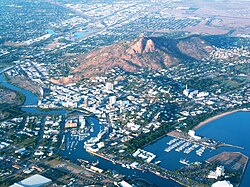
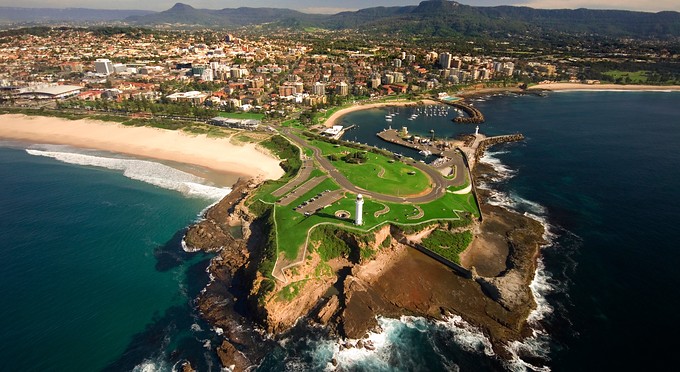

.jpg)
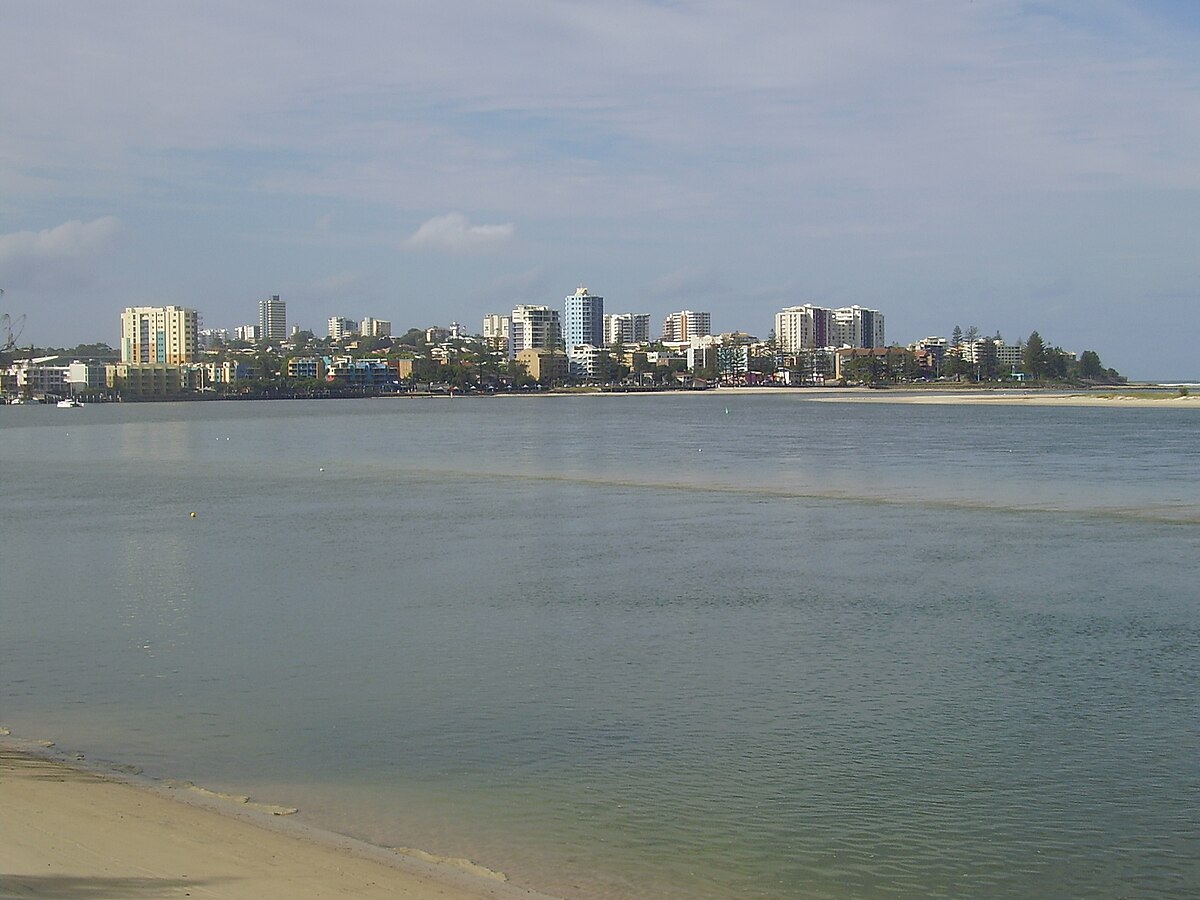

.jpg)
_(7445134654).jpg)
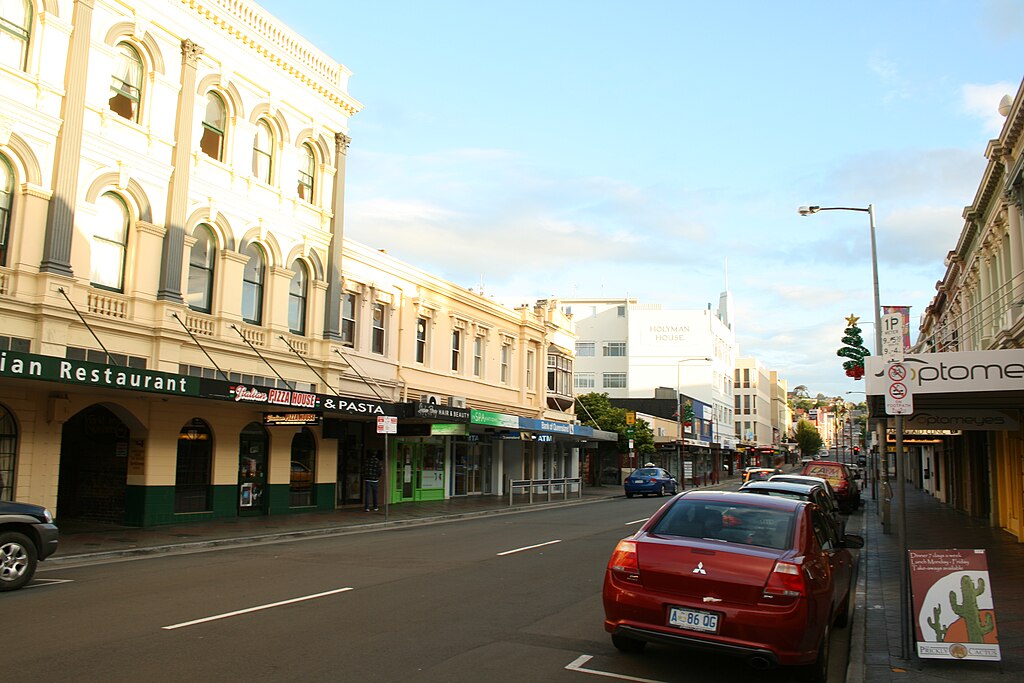

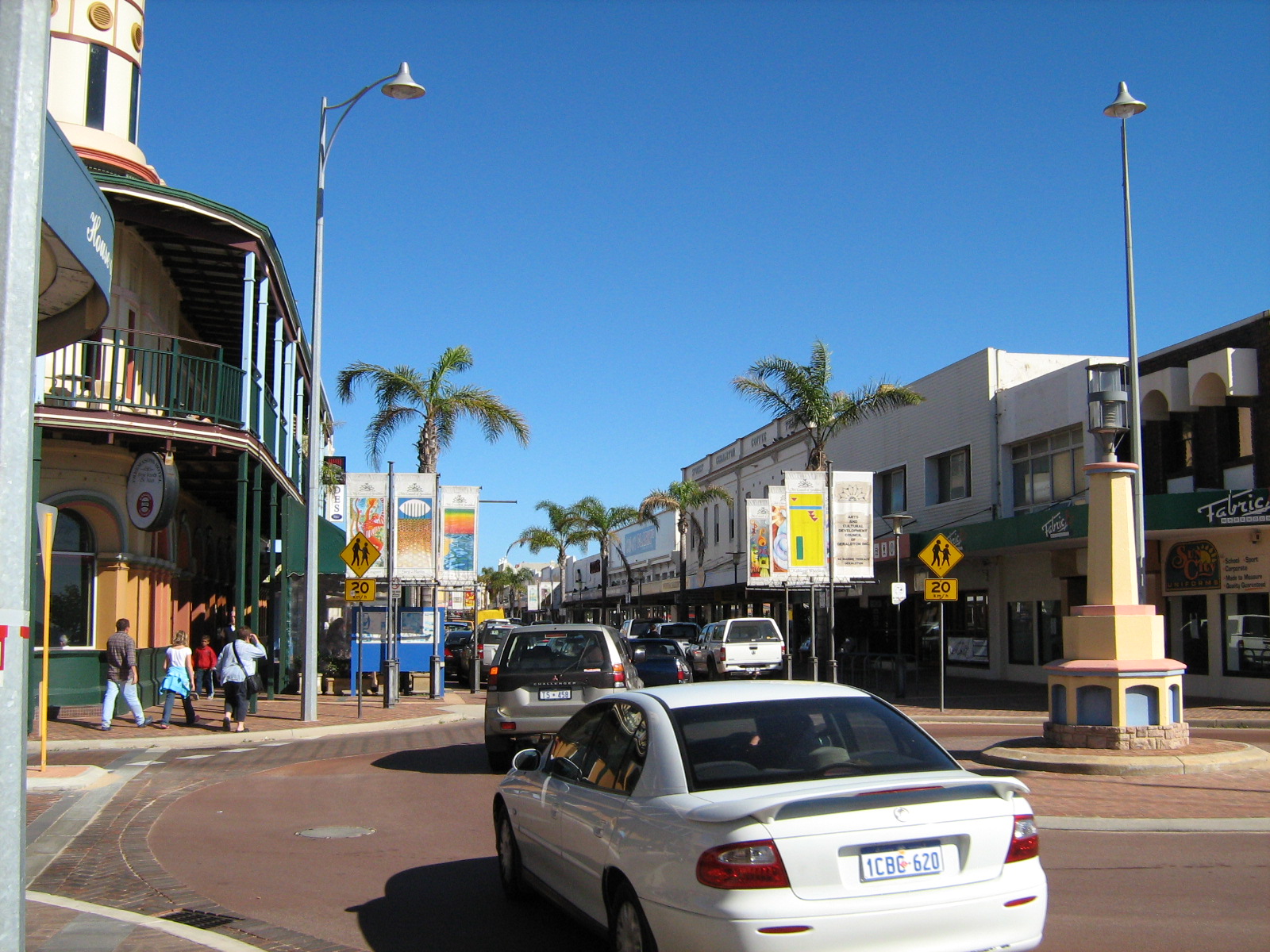
.jpg)
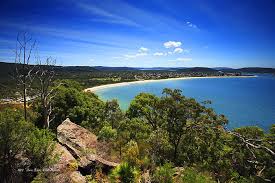
.jpg)

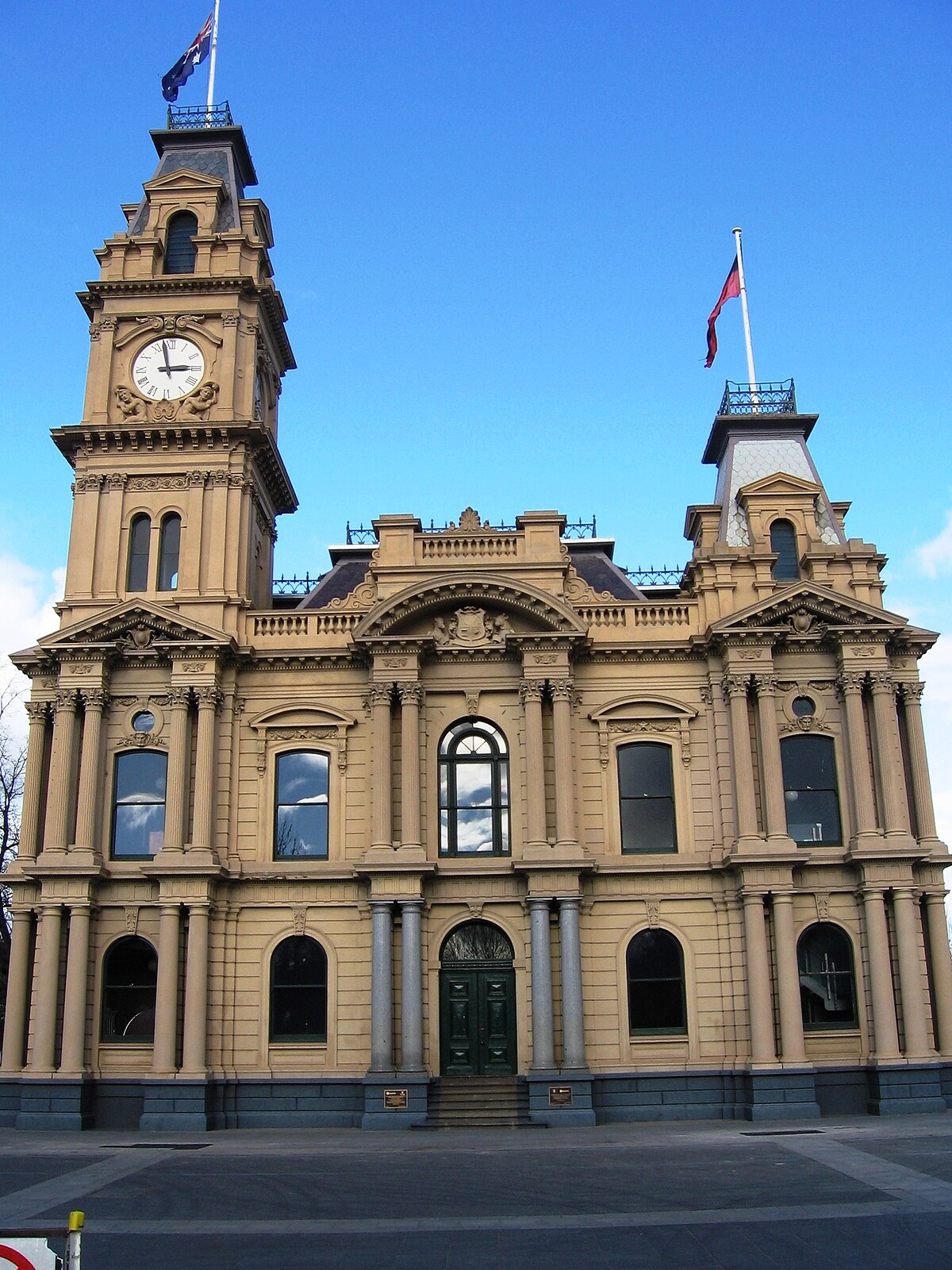


.jpg)


















